Awake Security BlackHat 2017 Soirée PCAP Challenge Write-up - Analyzing a PCAP file in a hard way
09 Aug 2017Hi! It’s been a real while since the last post (I said the same in the last post)… But this summer, I’m working in one of the security teams at Facebook as an intern, and one of my colleagues told me about an interesting PCAP analysis challenge.
Solving this was a ticket for an after party for this year’s BlackHat organized by Awake Security.
Although I couldn’t go to the BlackHat this year nor the after party, I found this challenge
very interesting and worth a post.
If anyone wants to try the challenge, this is the actual PCAP file downloaded from this registration form.
Let’s dive in!
Reading the instruction
When you open up the PCAP file, you’ll notice that there’s a HTTP GET request to /instructions.hello.
Let’s see what’s in there first by “Follow HTTP Stream”.
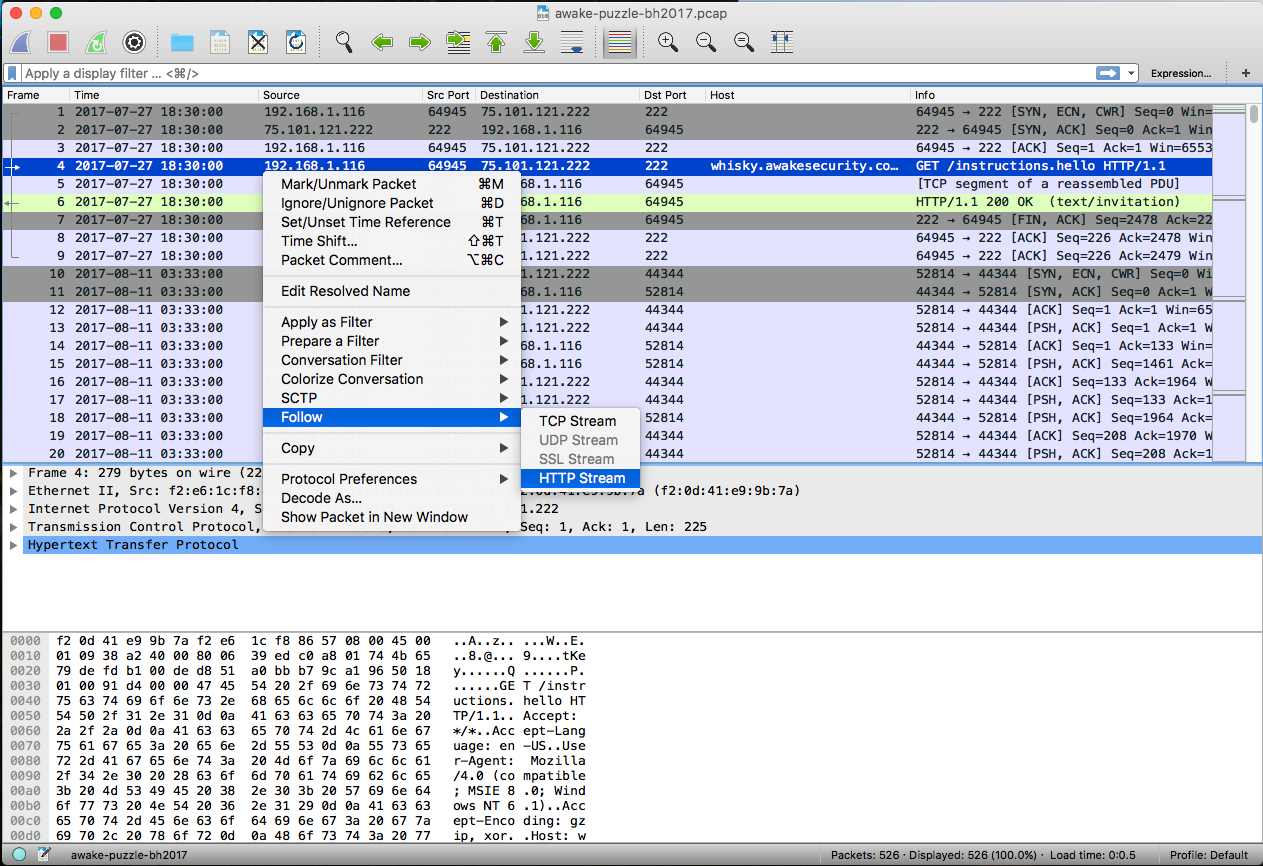

Well, it looks like a normal instruction except one thing:
Accept-Encoding: gzip, xor. Never heard of xor encoding for HTTP request,
maybe a clue for the flag.
Weird stuff in mDNS
When you look through other frames, you’ll notice a few mDNS packets buried in a bunch of TCP packets.
But the search queries definitely don’t look legit, like alert.msg, cyberchef.helps and key.version? They might be another clue for the flag!

Are they really just TCP?
You might be stuck at this point (well, I was), as what’s left were five similar
TCP connections between 75.101.121.222:44344 and 192.168.1.116
in which you can find little human readable strings, except for “Agbogbloshie” and “Golden Showers Far East Import” (WTF?).
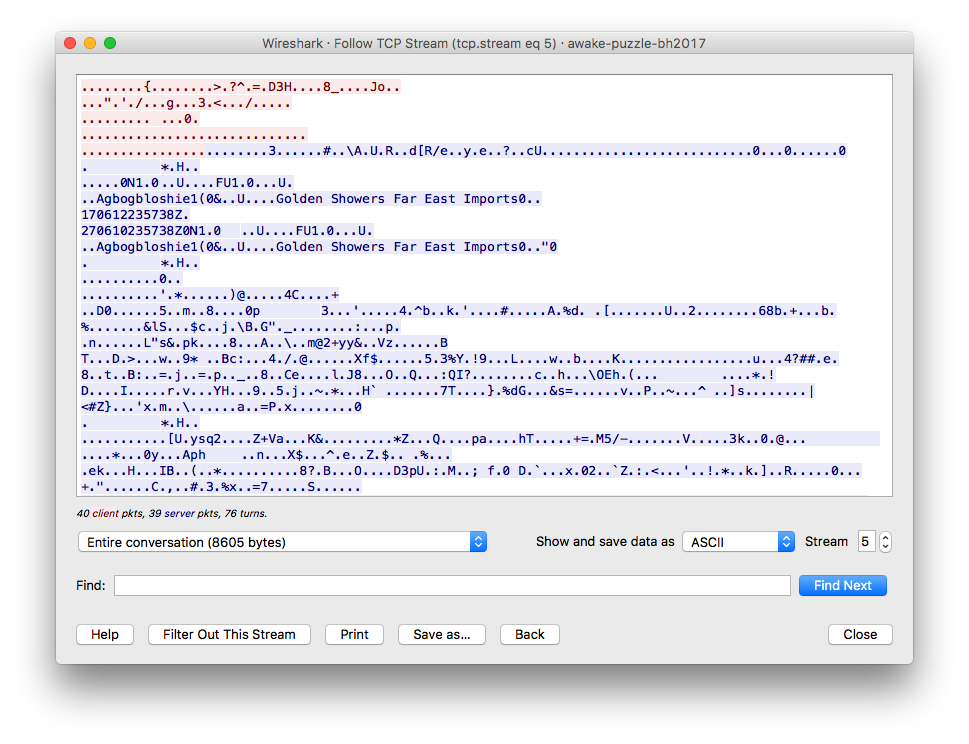
But if you look closely enough, you’ll realize that the data payload of many of these packets
starts with the bytestring 16 03 03 00.

Unfortunately, I don’t know the header bytestring of every common protocol by heart, so I just googled it and found that it’s a header for TLS packet! (This web page has a great explanation for the protocol format.)
Now, all you need to do is to decode these packets as SSL stream.
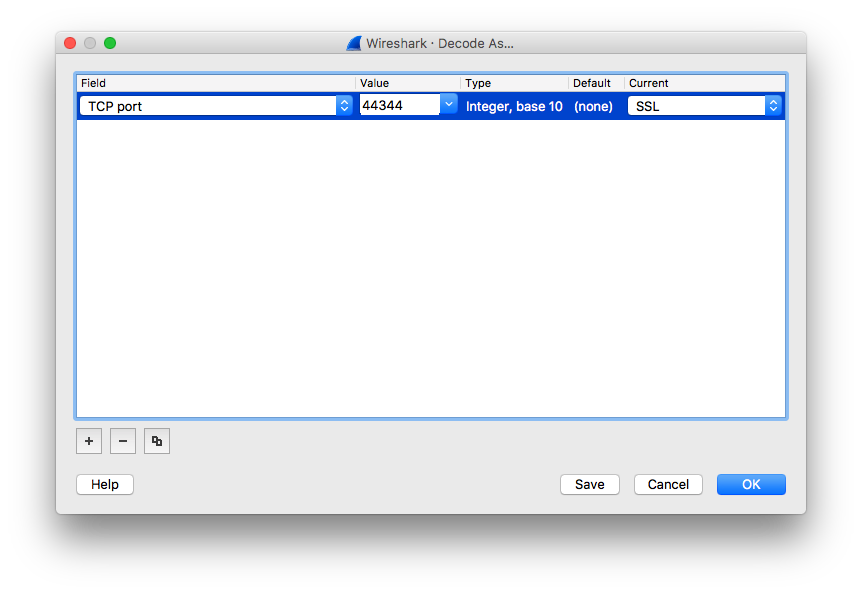
Finding the flag
Once you decode them as SSL and go through them, you’ll realize one weird thing:
Encrypted Alert in the frame 524.

If you remember the earlier clue alert.message, you’ll realize this packet probably has some clue.
The packet header says the message length is 308 (or 0x0134 if you prefer hex),
so I extracted the message part (from the bytestring 50 4b 03 to the end, which is
right after the length header)
and use Cyberchef to figure out what it is.
(cyberchef.helps was another clue from mDNS packet.)
When you use the Detect File Type operation, you’ll see that this is a zip file!
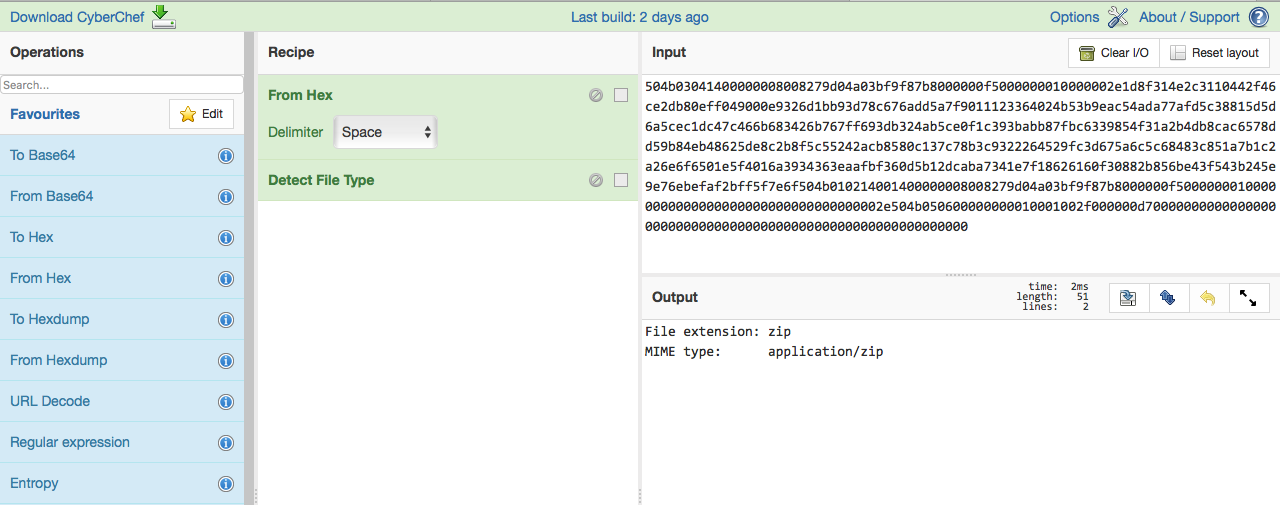
Cool, let’s just unzip it — this is the unzipped file in Cyberchef.
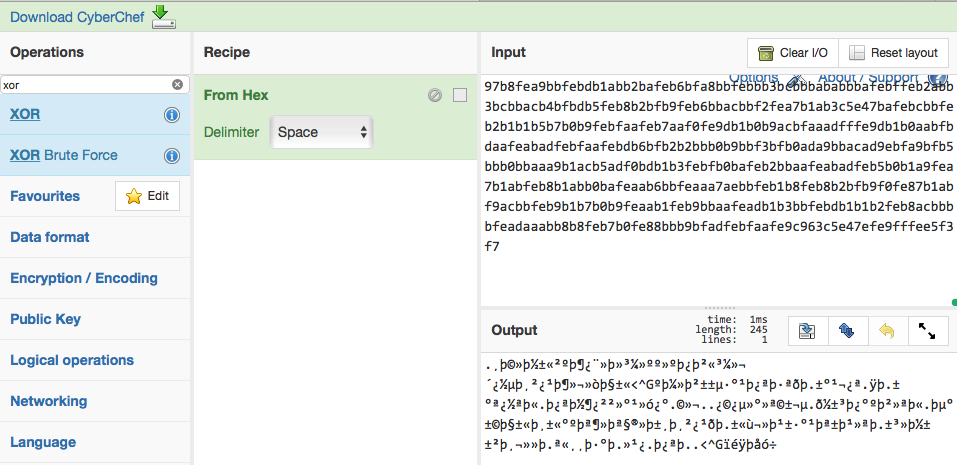
Umm, it’s still not really readable… But remember, you still have two remaining clues:
key.version from mDNS and xor from the instruction page.
Aha, maybe XORing this file with the Encrypted Alert’s version (0x00de)?

And here it is, found the flag!